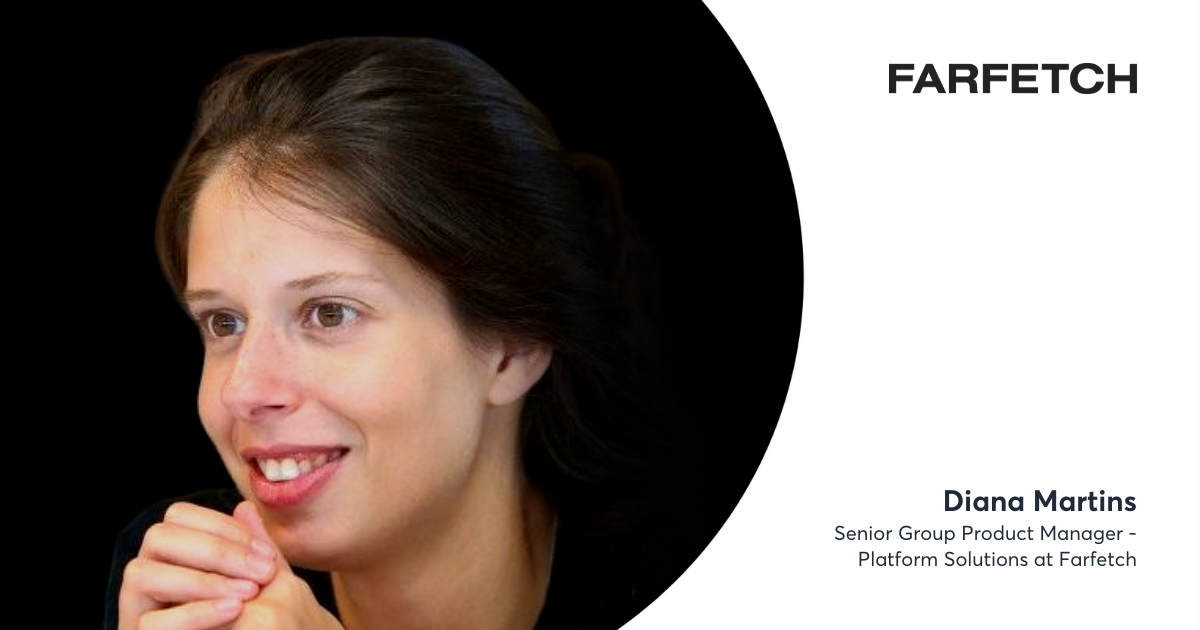Disrupting Fashion: How H&Mbeyond. Drives Retail Innovation

But digital transformation is not every retailer's first language. Brands that prioritized legacy technologies and processes may not have had the technology foundation to respond to the crisis. In fact, in a recent survey of over 300 retail directors from apparel and footwear brands across the UK, Germany, and France, 57% reported they weren’t agile enough to capitalize on the e-commerce boom.
To uncover more about the importance of innovation in the fashion industry, we sat down with H&M’s Oliver Lange during one of the panels at Disruption Forum Retail. After working as a Retail Manager at H&M for several years, Oliver was looking for a new challenge closer to his heart. He was given the opportunity to set up the company’s first fashion retail innovation team and is now the head of H&M Lab Germany and H&Mbeyond., its innovation studio.
Through research, co-creation, and piloting ideas, Oliver and his team of four work to test concepts that will help drive the fashion industry towards a more sustainable and circular future. With many years of retail experience under his belt, he has plenty of insights when it comes to disruptive innovations in the fashion industry. Let’s dive into his takeaways from the panel.
Retail brands need to meet customers where they are
While many brands aim to be customer-focused, it can be hard to know what it means to truly make customers the center of their businesses. “Customer behavior is changing,” explained Oliver. “We get impatient, and we want things instantly – in Berlin, you can have food delivered within ten minutes.”
To succeed, he urged retail innovators to make every decision with customers in mind.
“Be customer-centric and user-centric. Understand what the need is and if there’s demand from the market.”
“What do customers want as a product, as a service? What is an experience they expect or that would surprise them in a positive way?”
By adopting a customer-first mentality to innovation, you can develop products and services your core customers love. According to Oliver: “This means putting customers in the driver seat at a very early stage in the innovation journey. Test, fail, adapt… and fail harder.”
Innovation projects must allow and accept the possibility of failure
Where does innovation come from? At H&Mbeyond., it’s all about seeing opportunities where no one else can and exploring the unknown. By connecting to innovators and empowering through the design process and co-creation, Oliver and his team work to develop solutions with customer value that make an impact both for H&M Group and the innovators. Here are Oliver’s three golden rules for innovation:
Research to see into the future
Research is a fundamental building block when it comes to idea development. It guides numerous decisions and it’s a fast way of finding out where opportunities lie. “By looking into the future of fashion and gathering research and data, we can see if there are potentials or threats on the horizon,” explained Oliver. “We start with a problem and we use research to try to understand if this is something we need to solve as H&M or that we want to solve – and that’s when the magic happens.”
Leverage the power of co-creation
Oliver is a big believer in looking for outside innovation to participate in the problem-solving process. “When we need a solution, we don’t just look internally, because the best ideas – I can say this now after four years of experience – don't only come from within,” he said. “We try to find people from the outside world or startups in our network who have a solution or idea or technology that solves the problem we have.”
Gauge demand for your product
Input from consumers also plays a central role from start to finish. “Sometimes, we have customers in play from the beginning to understand a little more and observe how they move and what they expect. Then, once we have a pilot created, or an idea of how the solution could look, we just throw it onto the market. Then we have it in a scenario: whether that’s a physical store or online, which allows us to really test and validate our solution.”
Innovation starts with a culture of courage
Sparking innovation involves risk because it can mean failing – something Oliver doesn't shy away from. “In the end, it’s about finding out if we’ve failed or succeeded, but both are valuable. Knowing what no one wants is just as important.”
Being separate from the global H&M brand gives Oliver and his team the freedom to take bigger risks, while still providing the quality consumers expect. When asked what he thinks about this brave attitude to innovation in retail, Oliver was clear that courage is the only way.
“I don’t think we have too much time to change or influence the industry.”
“Customer behavior is changing dramatically fast due to a radically changing world. We, as H&M, need to know our impact, and we need to create and find solutions to help us keep our business idea alive in the future. We need to take these risks and at H&Mbeyond., we can do that.”
The biggest challenge: implementation
Innovation is like a funnel. Out of hundreds of ideas, only a few will get through, and only the best will be fully developed and launched on the market. “Implementation is the hardest part,” said Oliver.
To increase the chance of developing viable ideas, Oliver emphasized the importance of having two problems at the beginning of every innovation process: one for the customer, and one for the business unit serving that customer.
“Early on, we try to mirror our customer problem into the organization.”
One example he shared was a sizing project in Germany. “We knew from customers that 30% of people in Germany don’t fit in standard sizes.” His team discovered this problem was also being felt internally with a high number of customer returns. So, as Oliver put it, “I have a problem from a customer, a problem from H&M, a startup with the technology to solve it, and I have the passion to go there.” Those are the ingredients needed for a greater chance of success.
“Made to measure” clothing
One idea that made it through the funnel was H&Mbeyond.’s new survey-based pattern creation service. By asking you some simple questions, it translates your data into a perfect pattern. The item can then be instantly produced based on your measurements and your wished design. With satisfaction rates above 95% and thousands of products already sold, Oliver is very excited about its future potential.
“It solves a lot of sustainability questions because if you start producing when the demand is there, this is a radical change from an industry producing way ahead. That’s why it’s such an important product because it looks at a very high potential impact.”
With plans to offer custom-fit denim by the end of the year, and to expand into more product groups and markets, the future is looking bright for “made to measure” clothing.
The future of retail: personalized, digitalized, and hybrid
Looking ahead, Oliver believes a fully circular approach to fashion “using materials out there, not raw materials” needs to and will happen.
He also predicts online shopping will move toward a much more personalized approach by making use of customer data. “An online shop shouldn't look the same for you, as for me. It should somehow reflect our preferences and what inspires us. I believe we will see a lot of development there.”
He also envisions a lot of developments when it comes to digital fashion, digital collections, and virtual online stores. A rise in blended online-offline experiences could also be on the cards. “I feel that the virtual stuff will really inspire us in the future. It will also lead to digital collections. Buying clothes purely for digital reasons to use in game plays, or to dress in your Instagram account or an avatar, for example. This would excite me, at least, and my kids, definitely.”








